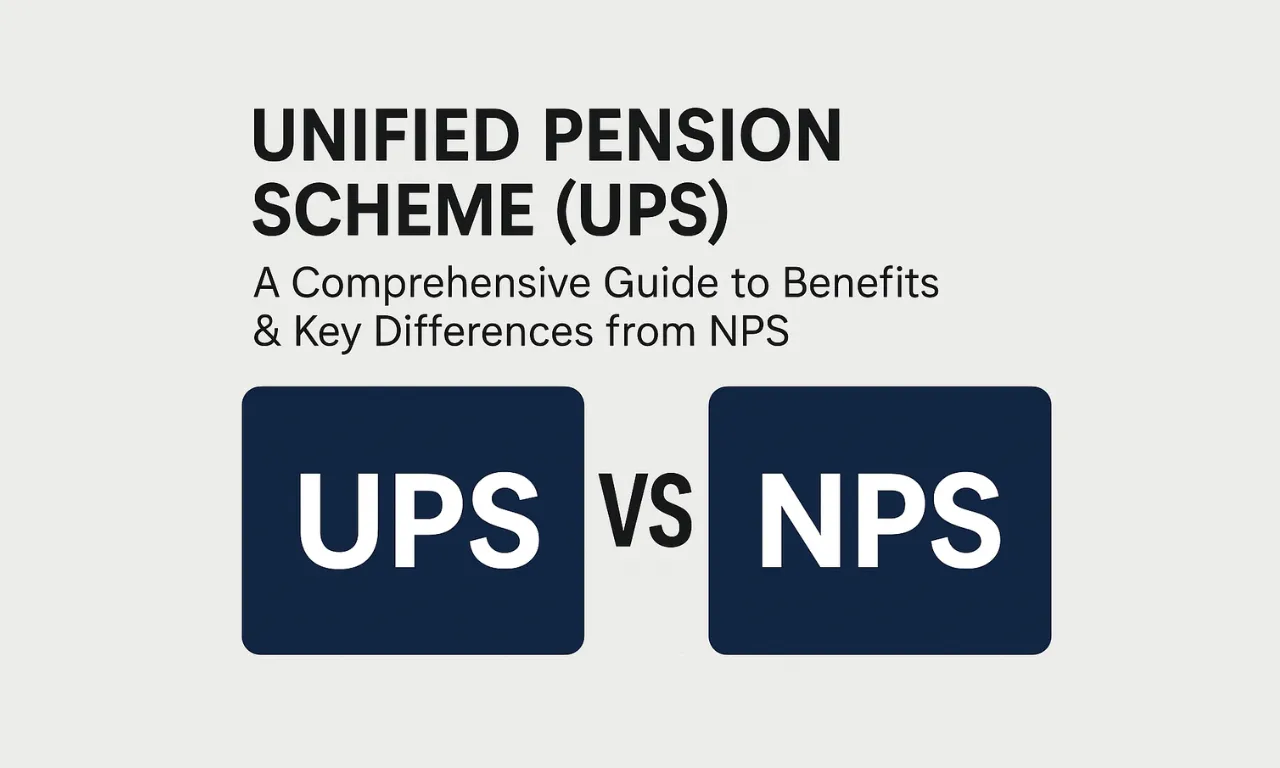- Government employees have until September 30, 2025, to pick between NPS and UPS.
- Younger employees under 35 gain more from the market-linked New Pension System (NPS).
- Employees over 50 should go for the guaranteed pension plan under Unified Pension Scheme (UPS).
If you are a government employee wondering which pension plan fits you best for retirement, it’s important to compare the New Pension System (NPS) and Unified Pension Scheme (UPS). Both schemes offer unique features and benefits made for different age groups and risk levels. Knowing these will help you decide which pension plan can secure your golden years.
Picking Between New Pension System (NPS) and Unified Pension Scheme (UPS)
Government employees have time until September 30, 2025, to decide between NPS and UPS. Each option has its own benefits depending on what you value — market-linked growth or guaranteed pension. Taking a closer look at the differences will help you make a clear choice.
Main Differences Between NPS and UPS
New Pension System (NPS) is market linked, depending on individual contributions invested mostly in stocks and government securities. It aims for long-term growth, assuming the market will grow over many years. You, as a subscriber, take on both market risk and risk of living longer.
Unified Pension Scheme (UPS), on the other hand, is a hybrid and guaranteed pension plan. It keeps a defined contribution system but adds a minimum pension guarantee adjusted for inflation. A special pension guarantee fund supports this promise, giving you a steady retirement income.
Age and Risk Factors to Consider for Choosing Your Pension
Your age and how much investment risk you are willing to take are key in picking the best pension scheme. Let’s look at the recommendations for different age groups.
For Employees Under 35 Years
If you are under 35, staying with NPS has benefits. The long investment period of 25-30 years lets you gain from compound growth, especially since NPS lets you invest up to 75% in stocks. Even though the market may go up and down in the short term, it usually smooths out over time, helping you build a bigger retirement fund.
Be ready for market ups and downs, but if you can handle some risk, choosing NPS can lead to higher gains.
For Employees Between 35 and 50 Years
If you are between 35 and 50, your choice depends on how much risk you can take and how many years you have until retirement.
If you are willing to accept more risk, sticking with NPS can pay off since 15-20 years is still enough for compounding to grow wealth. But if you want steady returns and to avoid market ups and downs, UPS offers a safety net with its guaranteed pension, which is especially useful as retirement gets closer.
For Employees Over 50 Years
Government employees over 50 should focus on UPS. Since the investment period is shorter, UPS’s guaranteed pension adjusted for inflation gives predictability and stability. Market swings could hurt your retirement money if you stay with NPS at this stage, so UPS provides peace of mind with a secure income.
How Market Performance Affects Pension Results
Pension results depend a lot on how the market does. NPS returns change with the market but can offer higher rewards for those who invest early and accept risk. UPS, with some investment in guaranteed pension funds, protects you from big market drops but might miss out on some gains.
Picking between the two means thinking about how comfortable you are with market risks and how many years you have before retirement.
Comparing Benefits Using NPS Trust Calculator
Using the official NPS Trust Calculator, we looked at estimated retirement benefits for different ages and market returns. We assumed retirement at 60, life until 80, salary growth at 2.5% yearly, and Dearness Allowance increasing at 6% per year.
Young Investor (25 years, Basic Pay Rs 25,000)
| Expected Returns | UPS Total Benefit | NPS Total Benefit |
|---|---|---|
| 8% | Rs 6.48 crore | Rs 5.85 crore |
| 9% | Rs 6.98 crore | Rs 6.93 crore |
| 10% | Rs 7.61 crore | Rs 8.28 crore |
| 12% | Rs 9.35 crore | Rs 12.05 crore |
Middle-Aged Investor (35 years, Basic Pay Rs 35,000)
| Expected Returns | UPS Total Benefit | NPS Total Benefit |
|---|---|---|
| 8% | Rs 4.37 crore | Rs 3.67 crore |
| 9% | Rs 4.65 crore | Rs 4.25 crore |
| 10% | Rs 5.01 crore | Rs 4.95 crore |
| 12% | Rs 5.93 crore | Rs 6.79 crore |
Older Investor (45 years, Basic Pay Rs 50,000)
| Expected Returns | UPS Total Benefit | NPS Total Benefit |
|---|---|---|
| 8% | Rs 2.90 crore | Rs 2.17 crore |
| 10% | Rs 3.16 crore | Rs 2.67 crore |
| 12% | Rs 3.49 crore | Rs 3.30 crore |
Knowing your age and how much financial risk you can take will help you get the most from your pension. Use available calculators and official sites like the NPS Trust website for accurate retirement planning.
In the end, whether you go for NPS because of growth or UPS for stability, planning your pension carefully today can make your retirement life safe and comfortable.
For more official details, visit the NPS Trust official site.

